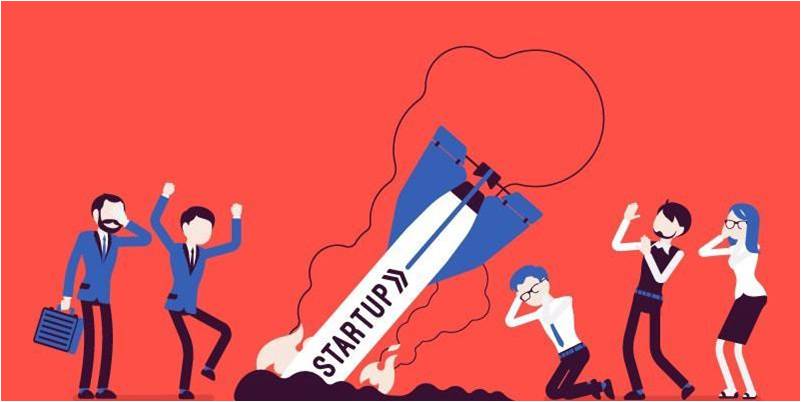Why do startups fail in India and the US?
Startups' failing is common
Startups are prone to failure by definition. And 90% of them fail. Personally, I am a lot passionate about technology, finance, and fundraising. It was quite compelling for me to analyze the root cause behind the failures of startups. A lot of the startups that bloomed in the last 5 years did wonders and are now listed on the stock exchange but what happened to the rest of them? Why did they fail? Why long due diligence of smart investors cannot avoid the money going below the drain?
This blog will provide a quick analysis of my in-depth research on why a few startups succeed and others fail.
Timeline of failures
Of all those startups that fail, about 10% of them fail in 1st year, 70% fail in between 2nd and 5th year, and the rest 20% fail after 5-10 years.

Root Cause why Startups fail
Startups fail due to many reasons. There can be many assumptions when a startup begins with- an overvaluation of the market, a fantastic team, or a crazy idea. The more innovative the startup, the riskier the premises it’s testing, and the more likely it is to fail. But life is not a bed of roses, full of thorns. Because when you start something new, there are many uncertainties on top of the traditional risks of starting a business (finance/cash flow risks, operational risks, team risks, marketing risks, etc.). It’s no more a surprise that startups fail.
As per Failory.com, startups can fail due to 7 major reasons.
- Product marketing fit
- Poor Marketing
- Team Conflict
- Finance Problem
- Tech Problem
- Operations Problem
- Legal Problem

Now let us take a close look at the various challenges of the startup.
Various challenges of startups
Inability to scale through brand visibility
The main challenge to the success of a startup is generating new business. Most startups come up with the idea that it is something new but often doesn’t get traction in the market, resulting in poor brand visibility.
Example of Quibi
Mobile-focused streaming service Quibi, which shut down in October 2020 just six months after launching and raising a mammoth $1.8B, found itself in this position. As reported in the Wall Street Journal, founder Jeffrey Katzenberg and chief executive Meg Whitman said in a letter to employees at the time of the shutdown:
“…There were ‘one or two reasons’ for Quibi’s failure: The idea behind Quibi either ‘wasn’t strong enough to justify a stand-alone streaming service’ or the service’s launch in the middle of a pandemic was particularly ill-timed. ‘Unfortunately, we will never know, but we suspect it’s been a combination of the two.”
In my opinion, their inability to make their brand recognizable and offer a compelling reason to the audience led to their downfall.
Assessing the market demand wrongly
A study by CB Insight shows that more than 40 percent of the 101 companies failed because they had planned their product or service entirely out of the market. In some cases, the market was not yet mature, or features were developed that were not relevant from the point of view of the target group and which the market, therefore, did not want.
Example of a failed Austrian startup- Woodero and Treehouse
Woodero raised the required capital successfully via crowdfunding but then failed due to the lack of demand for its wood-made smartphone and tablet cases.
Woodero had successfully raised around $1 Billion but failed to capitalize on it.
Dave Sloan’s startup Treehouse Logic, launched as SurveyMonkey for Website Configurators, also failed because Sloan wanted to solve a problem that was not relevant enough for customers to generate a profitable business model.
It had raised around $250 Million but all of that money went in vain.
Improper spending on marketing and not getting proper ROI
Companies spend a lot of cash on marketing which doesn’t attract customers but results in cash burn. Usually, they are not innovative enough or don’t try organic marketing where they don’t have to burn a lot of cash, but to understand their customer psychology and create content to win their trust.
Other problems with many startups arise from difficulties in calculating a high enough price to cover costs like operational costs, salary expenses, and other expenses but low enough to attract customers. These companies spend a lot on the acquisition of customers and don’t get adequate benefits from customer life cycle value.
— Do you mean the cost of customer acquisition using marketing is very high?
After incorrect spending on marketing, eventually, the startups fail.
Unable to sell stories about your solution to prospects
Storytelling is an essential element of a strong brand. Using the hero’s journey model, your brand message should make your customer the hero who wins the day because of your product or service. This is an excellent opportunity for startups with fresh ideas to grab their audience’s attention and draw them into the story you’re creating. Many startups are unable to stitch a good story for their customers in various stages of the sales cycle. With the failure to create stories ( which we call as content ), startups are not able to make a lasting impression of their brand in the minds of consumers. Ultimately sales drop, and startups fail.
Why do startups fail in the tackling the challenges
a. Lack of education about innovative marketing
Innovation marketing plays a crucial role in securing and increasing the success of innovation. The mere description of the task and role of innovation marketing makes it clear how vital the function in the innovation process is. Innovation marketing plays a role in all phases and thus ensures customer and market orientation, an important lever to avoid the failure of an innovation.
However, if innovation marketing is not enforced and pursued with priority, many risks and dangers must be avoided in an innovation project.
- If there is a lack of information about the market, customers, users, and their needs or if they are inadequate (e. g., not a representative or incomplete), wrong decisions are made concerning the product or the target market, which can drive a project in the wrong direction and, as a result, drive it to the wall. For example, the product is misplaced, the bad target market is chosen, or irrelevant needs are addressed.
- The product does not sell. This does not necessarily mean that the product is terrible. There are mediocre products marketed perfectly and are therefore more successful than those that are top of the line but are poorly marketed. Thus, innovative marketing is a critical success factor both internally and externally.
b. Lack of tools and technologies
- More so than in any other industry, rapid changes in technology can throw a startup off-kilter. Because technology changes so quickly, there’s a strong possibility that you may not be able to complete what you initially set out to do with your startup. Instead of accepting the failure of the business or changing direction, many startup founders simply let their operations stagnate. “The mainstream technologies today may be eliminated over the next few years,” said Chris Miles, CEO of business software provider Miles Technologies. “I have seen many companies develop entire product lines and build services and solutions based completely on emerging or popular technologies. When those [fads] go away, everything dissolves. Then what? You have to make sound and smart decisions.”
How can startups delay their failure with effective marketing?
Change is the only constant thing found in this universe in this dynamic scenario prevalent after the pandemic. To remain reliable, startups need to mold themselves to adapt to the changing circumstances. They need to adopt innovative marketing to grow and develop continuously. Innoventsoft helps startups achieve brand visibility and generate leads from organic channels through insights and analytics.
With the help of Innoventsoft, our top three customers have seen a 50% improvement in their website content creation, 75% improvement in content optimization, 99% improvement in brand visibility, and 10X rise in the no. of leads.
Try our product for free and see for yourself its benefits. Our top customers have seen extraordinary results within the first three months of use. So why wait? Register now. Visit Innoventsoft.





